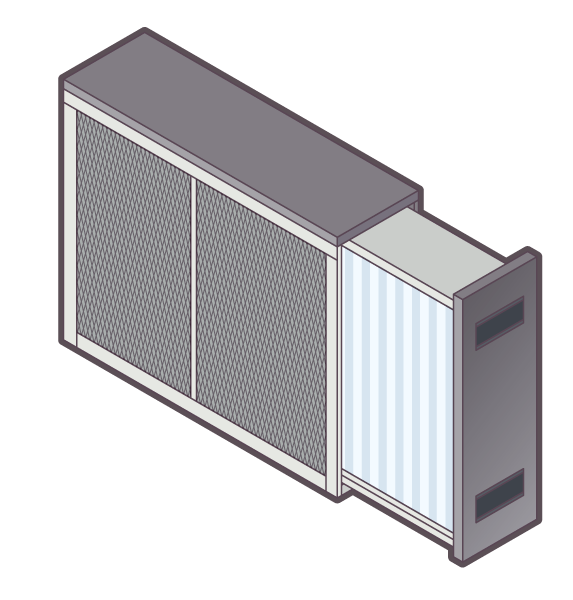Get Tech Tips
Subscribe to free tech tips.
Six Tips to Help You Write an Article for HVAC School

This tech tip was written by David Richardson, the Vice President of Training for NCI. David has been on several podcasts and has spoken at the HVACR Training Symposium multiple times. Thanks, David!
Your ideas and experiences are the ingredients for great articles. Unfortunately, they are easy to forget if you don’t capture them in writing. When you compound this with the fear of sharing those ideas and experiences publicly, they often never make it out of your head. If you’ve ever wanted to write an article for HVAC School but don’t know where to start, these six tips may point you in the right direction.
1. Capture Your Ideas
Most great ideas appear when we least expect them. That’s why writers throughout history have had a way of capturing their ideas while they were fresh. Early writers carried a notebook and pencil with them everywhere to capture flashes of inspiration. You should follow their lead. Thankfully, it’s much easier today. All you need is your smartphone and a notes app.
If you don’t use a notes app, start with the one on your phone. I prefer a note-taking app called UpNote because it syncs between my phone, both of my computers, and my tablet. I can capture and work on an article idea anywhere. If you’re constantly in different places, this feature is priceless.
Once you choose a notes app, create a folder in it called “Article Ideas.” Whenever you get an article idea, put it in this folder. Capture as much detail as possible so the idea is clear when you revisit it later.
Don’t procrastinate. You won’t remember the good stuff, so write it down immediately. If you’re like me and not the best typist, talk-to-text is another way to capture ideas quickly. You get the ideas out of your head fast and capture a lot more than you would by typing with your thumbs.
2. Know Your Audience

Before you put your article together, it’s good to know who you’re writing for and what you want them to do with the information. Imagine who you’re writing for and what they need. The more specific you can be, the better.
One idea is to write about a specific problem you ran into and how you solved it. The audience would be a “previous you” before you encountered the problem. Consider what you wish you had known before the event and how you would handle it differently today. Then, share the lessons you learned. If you can blend storytelling with the technical aspects of your problem, you have a recipe for a great article.
One danger in writing about personal events is always being the hero in your articles. Instead, share the problem that happened to you as a learning experience. Don’t be afraid to admit your mistakes so that others can learn and not repeat them.
3. Use Writing Filters
Just like an HVAC system uses filtration to keep garbage out of the blower and coil, your writing should have filters to keep certain things out of your articles.

The first writing filter is to write like you talk. As you write, imagine you’re sitting down with your readers and having a conversation with them. If you wouldn’t say it to them in person, then don’t put it in your writing.
The second filter is to be clear. Good writers make sure their message is easy to understand. They don’t get caught up trying to be philosophical and cute with their messages. Instead, they aim for clarity so that their readers understand the point they’re making.
The third filter is to be simple. Write for an eighth grader. If they can understand your article, you have a winner. One way is to use simple words whenever there is a choice. Never use the more complicated word, especially if you wouldn’t use it in conversation. If there isn’t a simpler word, use a relatable comparison to make the subject easier to understand.
The fourth filter is to get to the point as quickly as possible. It’s easy to spend too much time building up to a subject instead of just diving straight in. Don’t use a paragraph to say what you can distill into a few words. Try to write each article so your reader knows where you’re going and has something they can do with the information.
4. Break Your Writing into Six Stages
If you’ve ever been part of a new project, you know there are multiple phases like design, rough-in, installation, setting equipment, and startup. Writing is no different.

One of the biggest challenges of writing is that many people lump the entire process into one category. But there are multiple stages that build on each other and unless you keep the stages separate, it can take forever to write one paragraph.
Brainstorming
Brainstorming is stage one. Get your ideas down as fast as you can and expand on them. This step is supposed to be messy and not your finished article. You can brainstorm as bullet points in your note-taking app or use paper and pencil for analog brainstorming. Dry-erase boards are another good option.
Outlining
Outlining is stage two. This is where you organize the ideas you brainstormed. Think of this as moving puzzle pieces around on a table. You won’t see the complete picture yet, and it seems like a complete mess. If you used an analog method to capture your idea and brainstorm, now is the time to move those words to a digital format like Google Docs or Microsoft Word.
Writing your rough draft
Sometimes, you’ll skip these two steps and jump straight to stage three – writing your rough draft. In this stage, write as fast as possible and don’t stop. The trick is to gain momentum. If you need to, use talk-to-text. Your brain may work faster than your fingers at this point.
Don’t worry about grammar, typos, or punctuation yet. Remember, your goal is to get ideas out of your head and onto a document as fast as you can. If your article looks like a jumbled mess when you’re done, you’re exactly where you’re supposed to be.
Editing
Editing is stage four. Now, it’s time to slow down and look at your article through the eyes of your reader. This is where you clean up the rough draft messiness. As you edit and revise, add headers for topics and reduce your text to paragraphs with three or four sentences. They’re easier to read, and your readers will thank you for it.
Move words around so they make more sense and flow better. Also, don’t be afraid to cut words, sentences, and paragraphs. Author Anne Lamott calls this “killing your darlings.” I’ve found it’s best to let an article sit for a day or so before editing. If you forget what you first wrote, you’re at a good place to edit.
Proofreading
Proofreading is stage five. Once your edited article has sat for another day, go back and read it aloud. It’s crazy what you find once you re-read the written words. This is the fine-tuning stage of your writing. Despite every writer’s tendency to proofread to perfection, your article will never be completely perfect. Don’t let that hold you back.
Once you finish proofreading, ask a friend to proofread your article. They will see things you miss and bring up points to make your article clearer. Don’t take their comments personally. Instead, thank them for helping improve your work.
Submitting
Finally, submit your article in stage six. Save your article in Google Docs or Microsoft Word and send it to the HVAC School team. This step might seem obvious, but there are a lot of great articles that never see the light of day because the writer skips this final stage.
5. Know Your Enemy
The biggest reason many people don’t submit their articles is because of unseen enemies in their heads. These enemies will do their best to prevent you from writing. If you understand this, they are much easier to overcome. Some of the most common enemies that can hold you back are:
- Fear of others’ opinions
- Self-doubt
- Distractions
- Overthinking
- Procrastination
- Not enough time
- Laziness
You might think these enemies go away the longer you write. They don’t. The trick is expecting and dealing with them, kind of like having a residential customer put their dog on a leash before you arrive. Lock up the yapping dog in your head before it gets close to your creativity.
6. Start Small
Most people who want to write believe they must start big. But remember, the smaller you start, the greater your chances of success. Give yourself five minutes each day to write. Find a spare moment at lunch or between calls and capture something.
It could be an observation with a customer, something cool that happened, or a problem you ran into. Look for things that stood out or would make for a great story. This increase in awareness causes you to look for things to write about. The more you observe, the more you want to write.
Include Others

As you put articles together, get feedback from trusted friends who will be honest with you. Don’t take their advice as criticism. Instead, know they want the best for you and are only trying to help. I’m grateful for the people who helped me write better.
We can all learn something from each other. But unless you open up and share, no one will benefit from the wealth of knowledge and experience you have. Why not take the first step and see what you have to offer? It might surprise you.
—David Richardson
David Richardson serves the HVAC industry as Vice President of Training for National Comfort Institute, Inc. (NCI). NCI specializes in training focused on improving, measuring, and verifying HVAC and Building Performance. If you’re an HVAC contractor or technician interested in learning more about improving the industry, contact David at ncilink.com/ContactMe.











Comments
To leave a comment, you need to log in.
Log In